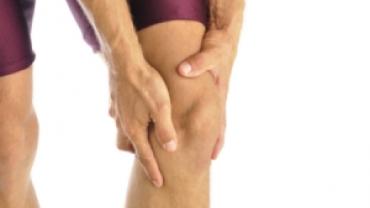
Most patients with osteoporosis or osteopenia who want to optimize their bone health take supplemental calcium vitamin D vitamin K and typically some trace minerals found in most bone support products. On the other hand patients with joint pain tend to gravitate towards nutrients such as glucosamine chondroitin and MSM.
Research shows that the body needs a unique bioactive protein complex to help make these nutrients work. What makes this complex so unique is the natural array of growth factors and stem-cell activating proteins known as bone morphogenetic proteins (BMPs). Bone Morphogenetic Proteins are what cause bone to regenerate. This is a significant breakthrough as they have clinical indications for osteoporosis osteoarthritis rheumatoid arthritis osteopenia and fractures. BMPs work at the cellular level where they become a chrondrocyte (produce cartilage) or an osteocyte (produce bone tissue). They cause a complex set of reactions along with anti-inflammatory properties that encourage healing at a very quick rate. Many patients see a change in their symptoms during the first week. Oral supplementation with BMPs has been shown to have a direct effect on bone metabolism with no cases of adverse effects.
There are important factors to consider in determining a proper therapeutic dosage such as the number of joints affected body weight severity of condition and family history. For example in osteopenia and osteoporosis it is important to look at the rate of decline in bone loss to determine an appropriate dose. In addition to dexa scans you may consider using a Bone Resorption Assay which measures the deoxypyridinoline fragment of Type I collagen breakdown from a single urine specimen or the bone formation marker bone alkaline phosphatase (BAP). These are relatively inexpensive to test and are cost-effective tools to routinely monitor bone resorption rates and the effectiveness of therapy.
When taking BMPs it is recommended to start with a loading dose and then titrate down. Bone loss during aging as well as in post-menopausal women results from an imbalance between bone formation and bone resorption. Loss of bone strength and an increased number of bone fractures in patients with osteoporosis may be associated with a lower content of BMPs and growth factors in the bone's matrix. Since BMPs are considered bone anabolic agents they can play an essential role in decreasing the progression and severity of osteoporosis.
In addition a clinical trial demonstrated these osteoinductive proteins helped yield a significant improvement in the reduction of joint pain and frequency of pain with an increase in activity level and joint strength in those with osteoarthritis. Dosing for joint health (i.e. osteoarthritis pain and inflammation) is typically higher than for osteoporosis.
As reported in numerous clinical studies clinical improvement for degenerative joint disease has been seen within days to weeks. The early effects of bone morphogenetic proteins are their immunoprotective properties against pathways that cause inflammation and associated pain. As a result you have a protein complex that naturally resists breakdown in the gut activates stem cells and protects the body from inflammation resulting in a very rapid onset of action.
by Michael Jurgelewicz DC DACBN DCBCN